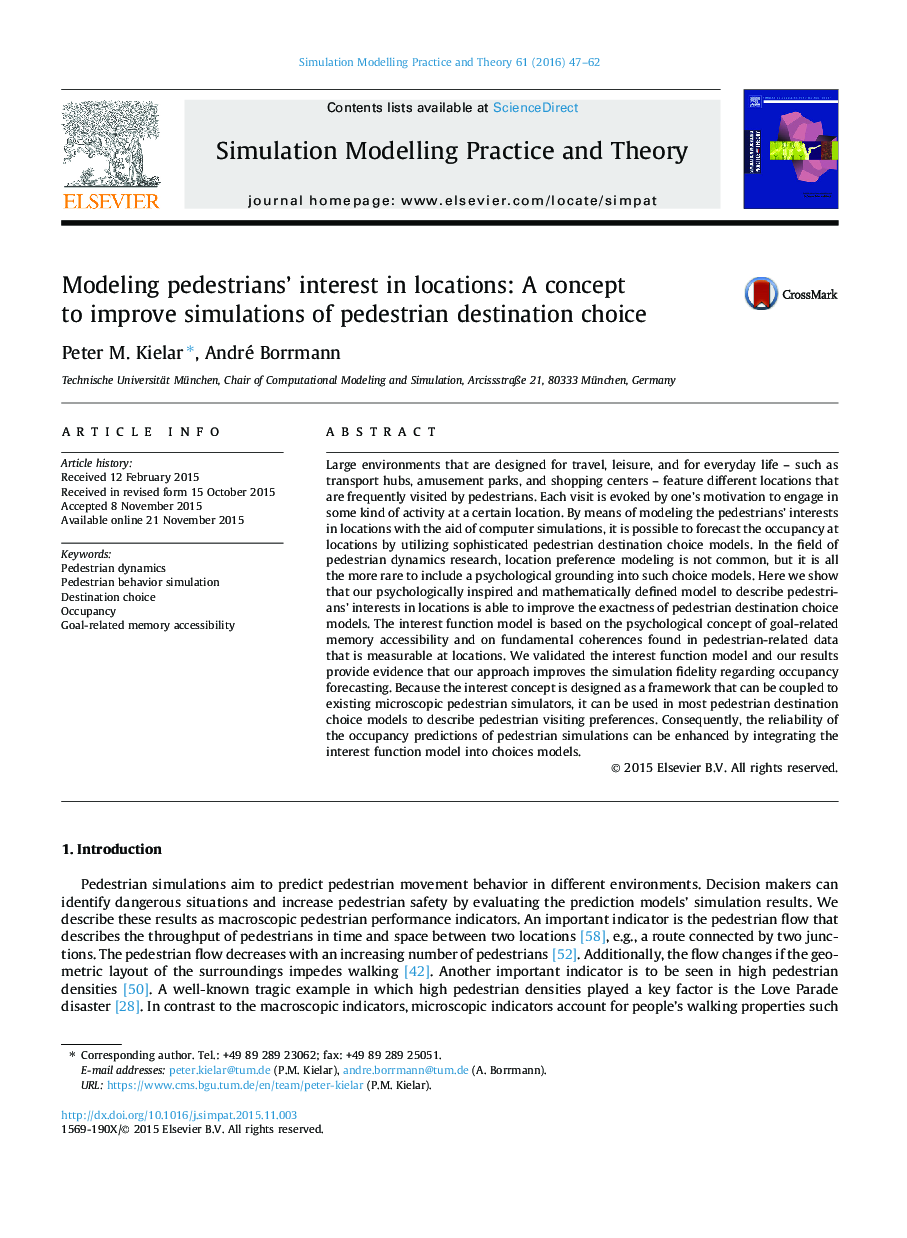| Article ID | Journal | Published Year | Pages | File Type |
|---|---|---|---|---|
| 491909 | Simulation Modelling Practice and Theory | 2016 | 16 Pages |
•We present a framework for modeling pedestrians’ interest in locations.•The model integrates psychological findings and fundamentals of pedestrian dynamics.•The model improves occupancy predictions in pedestrian computer simulations.•The model is validated for single-location and multi-location simulation scenarios.•We present a method to couple the model with pedestrian destination choice models.
Large environments that are designed for travel, leisure, and for everyday life – such as transport hubs, amusement parks, and shopping centers – feature different locations that are frequently visited by pedestrians. Each visit is evoked by one’s motivation to engage in some kind of activity at a certain location. By means of modeling the pedestrians’ interests in locations with the aid of computer simulations, it is possible to forecast the occupancy at locations by utilizing sophisticated pedestrian destination choice models. In the field of pedestrian dynamics research, location preference modeling is not common, but it is all the more rare to include a psychological grounding into such choice models. Here we show that our psychologically inspired and mathematically defined model to describe pedestrians’ interests in locations is able to improve the exactness of pedestrian destination choice models. The interest function model is based on the psychological concept of goal-related memory accessibility and on fundamental coherences found in pedestrian-related data that is measurable at locations. We validated the interest function model and our results provide evidence that our approach improves the simulation fidelity regarding occupancy forecasting. Because the interest concept is designed as a framework that can be coupled to existing microscopic pedestrian simulators, it can be used in most pedestrian destination choice models to describe pedestrian visiting preferences. Consequently, the reliability of the occupancy predictions of pedestrian simulations can be enhanced by integrating the interest function model into choices models.
